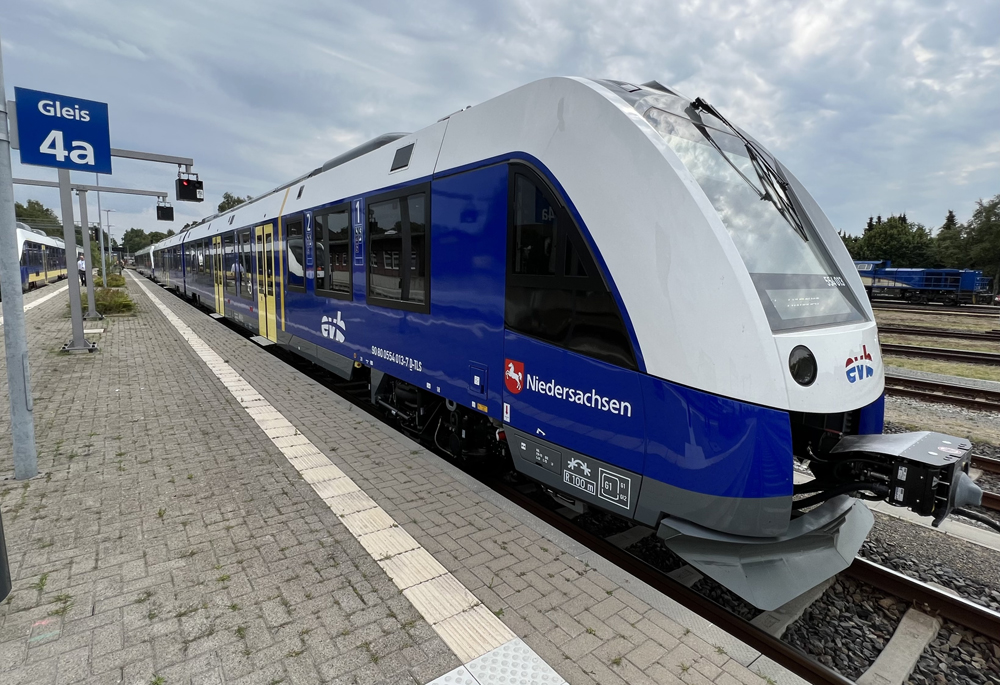
BREMERVORDE, Germany — Germany’s pioneering hydrogen-fuel-cell powered passenger trains have achieved the next step in their launch, fully handling service on their Cuxhaven-Bremervörde-Butexhude route as of today.
Alstom, manufacturer of the 14 Coradia iLint trainsets, called the 100% hydrogen operation of the route a “historical milestone” in a press release.
The trains had begun operation on a “preliminary” basis July 25 [see “World’s first hydrogen trains enter regular passenger service,” Trains News Wire, July 26, 2022]. Bremervörde is about 40 miles southwest of Hamburg.
“Emission free mobility is one of the most important goals for ensuring a sustainable future and Alstom has a clear ambition to become the world leader in alternative propulsion systems for rail,” said Alstom CEO Henri Poupart-Lafarge. “We are very proud to bring this technology into series operation as part of a world premiere, together with our great partners.”
The 14 hydrogen trainsets, which will replace 15 diesel multiple-unit trains, have a 1,000-kilometer (620-mile) range that allows them to operate for a day on a single tank of hydrogen. Multinational chemical company Linde has built, owns, and operates the refueling system for the trains, located in Bremervörde. The company says the system’s capacity of about 1,600 kilograms (more than 3,500 pounds) makes it one of the largest hydrogen fueling systems ever built.






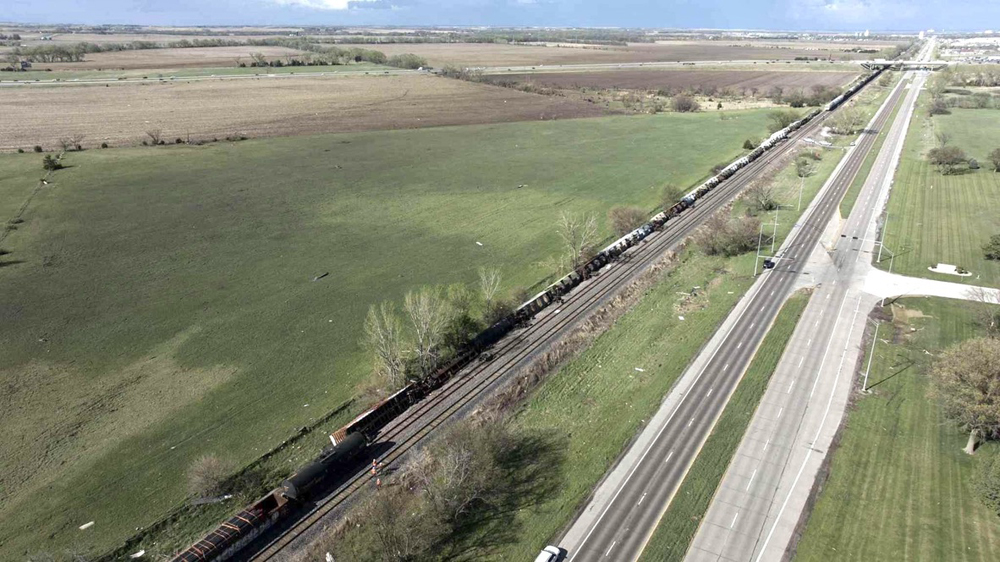
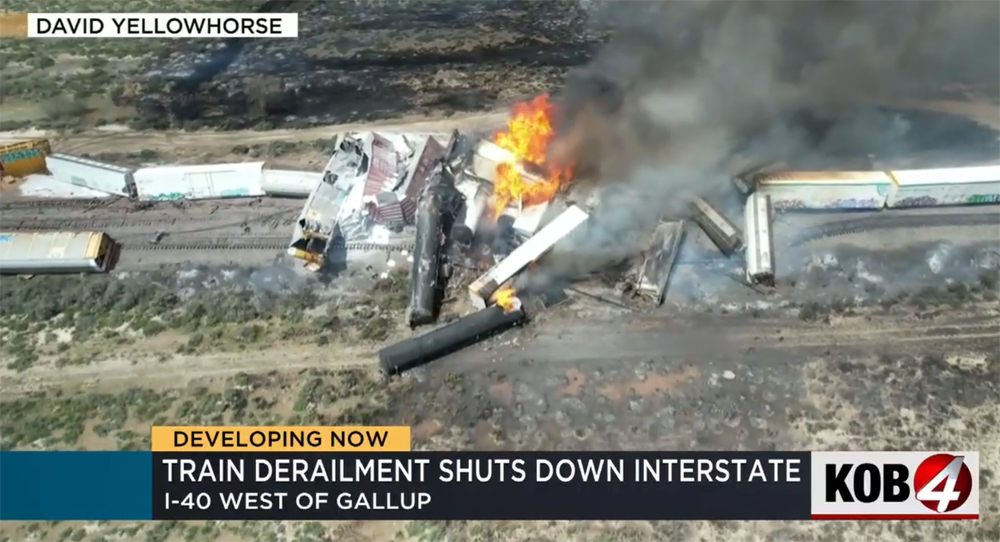
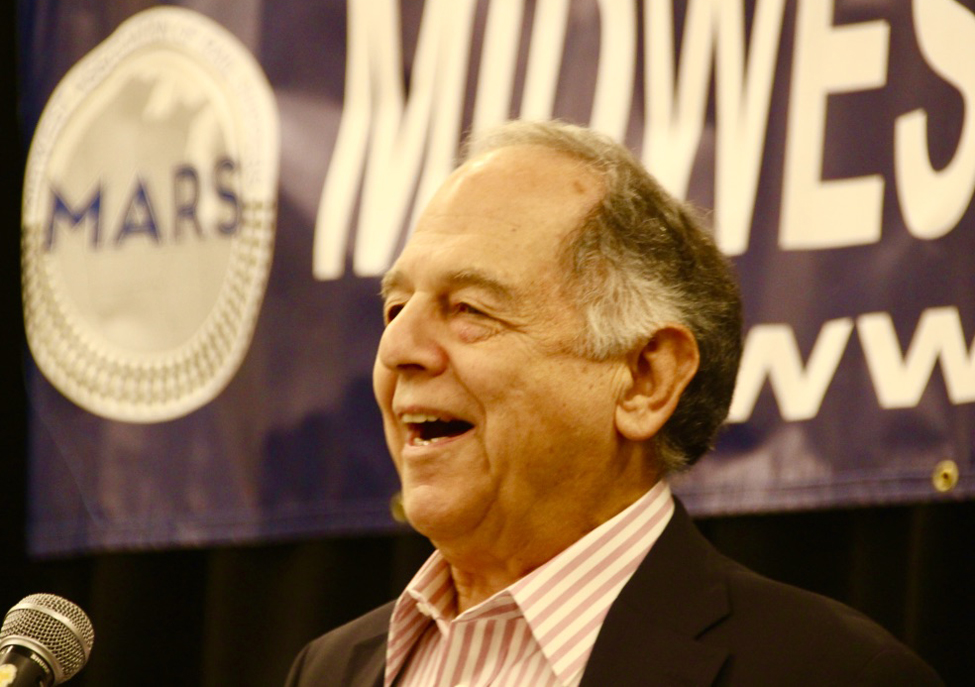
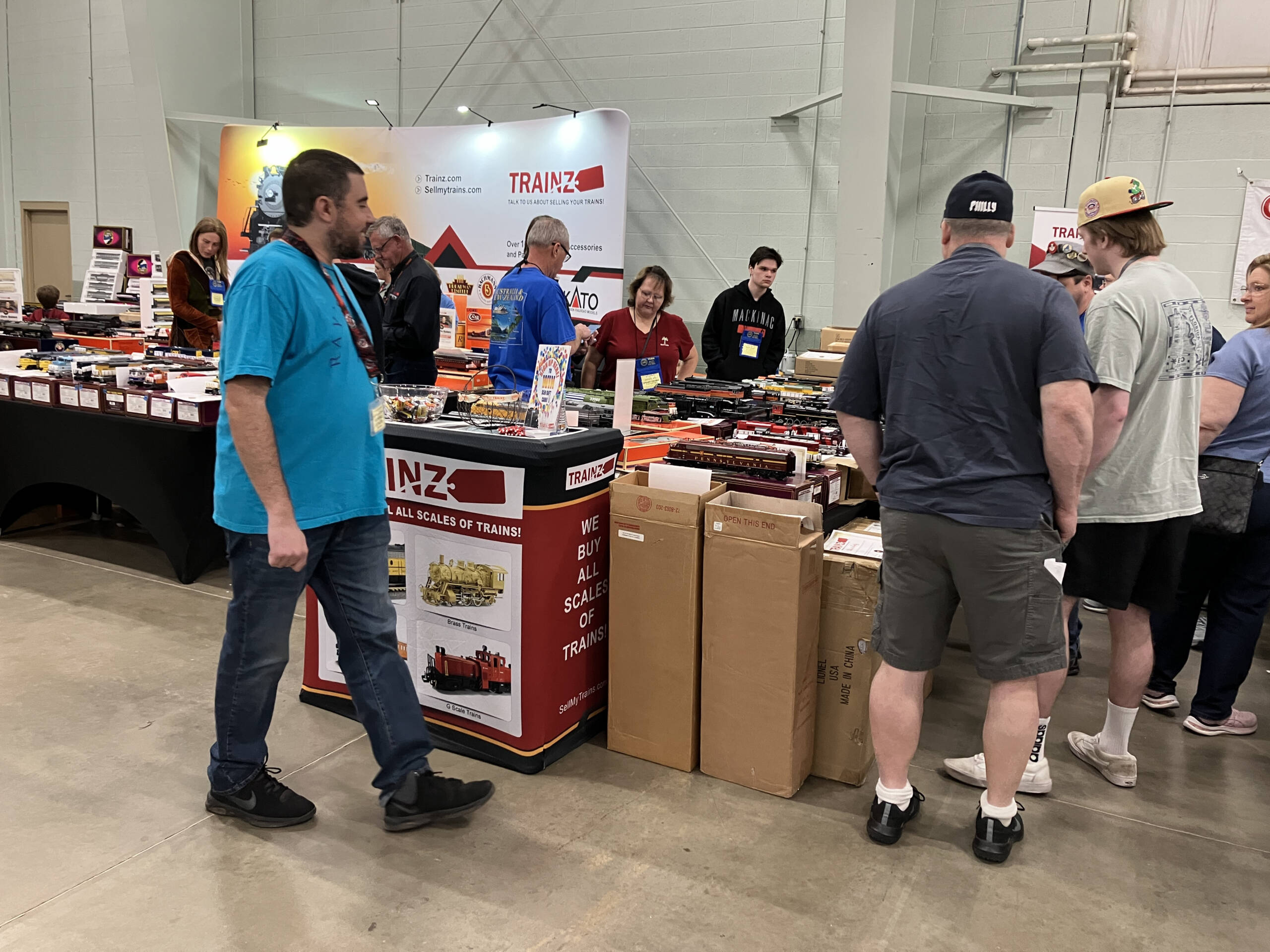




How do the operating costs of the hydrogen trains compare to the DMU’s?
‘Grey’ hydrogen is produced from natural gas using a process of steam refining. Carbon dioxide is released to the atmosphere. ‘Blue’ hydrogen is like grey hydrogen but the carbon dioxide is captured and sequestered underground. The big energy companies like the idea of ‘blue’ hydrogen. ‘Green’ hydrogen is produced from water using electricity from renewable and nuclear sources. No carbon dioxide is produced.
If you happen to live in a location with 100% clean electricity like British Columbia or Quebec then the hydrogen produced by electrolysis is completely green.
Europe does not have a clean power grid and restarting coal plants to make up for loss of Russian gas is not helping. Europe is committed to renewable power sources and will eventually be clean. The cleaner the grid, the cleaner the hydrogen.
Using hydrogen makes sense as the transportation system automatically gets cleaner as more renewables are added to the grid. The same is true for electric vehicles.
thanks for explaining this
Greg/Walter: Good point, the answer proponents have is, “Don’t confuse me with the facts” endmrw0824221146
Or, out of site, out of mind?
I agree with Gregg. If CO2 is a waste product from making hydrogen how can it be emission free? Same as people that buy elect cars. Where does most of the electricity come from to charge them. Coal, oil, natural gas, and nuclear? Emission free?
Hydrogen local transit buses have been around for years in the US. They have advantages and disadvantages. So far the disadvantages have resulted in their non-use outside of the areas which have natural gas supplies readily available.
Meanwhile another European country makes a leap while the United States of America trudges along in transportation. My fingers are still crossed though.
I think you will find the “leaps” vary depending on where one is looking. When the EU went whole hog on diesel, the US took a clear stand and introduced rules on ULSD (ultra low sulfur diesel) and the use of DEF to reduce NOX long before the EU finally saw through the soot. That is why Volkswagen fell down, they couldn’t get their small diesels compliant.
Same with the EPA Tier standards for rail engines in the US. Many rail engines in the EU are electric, but in the eastern part, are very much still first gen diesels.
The early breakthroughs in lowering emissions in aircraft jet engines were developed at US based GE and later at Pratt & Whitney. Only now is Airbus investing in hydrogen and electric jet power sources for testing.
Each region makes and breaks new possibilities based on the economics of their respective locations. Where I live diesel based transit was retired over 7 years ago and replaced with LNG.
The EPA last week announced they are going after the diesel truck tuners and “roll coal” crowd with their soot laden blowouts, especially around EV’s.
Most hydrogen is produced from natural gas and CO2 is a waste product… Which begs the question how can this be called “emission free” and where the natural gas will come from.
Do you know for a fact that’s where the hydrogen comes from? It could also be made by electrolysis of water with solar panels providing the electricity.
I remember doing this experiment when I was in high school chemistry in the 1970s. It’s not difficult.